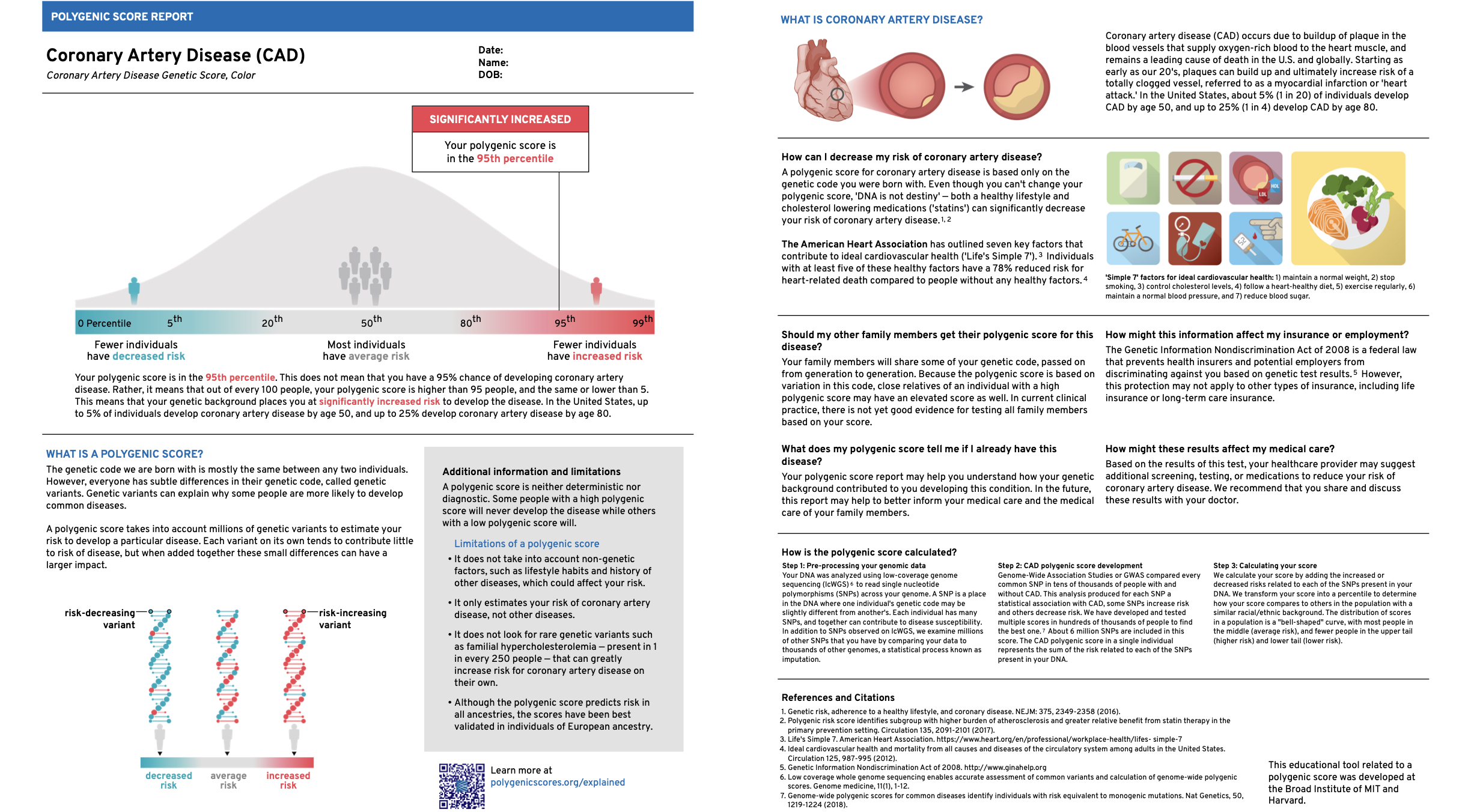 Polygenic score reports for coronary artery disease. All reports consist of five sections: (1) Participant information, (2) Participant score, (3) What is a polygenic score? (4) What is coronary artery disease? and (5) How can I reduce my risk of coronary artery disease?
Polygenic score reports for coronary artery disease. All reports consist of five sections: (1) Participant information, (2) Participant score, (3) What is a polygenic score? (4) What is coronary artery disease? and (5) How can I reduce my risk of coronary artery disease?
Abstract
Background: Polygenic scores—which quantify inherited risk by integrating information from many common sites of DNA variation—may enable a tailored approach to clinical medicine. However, alongside considerable enthusiasm, we and others have highlighted a lack of standardized approaches for score disclosure. Here, we review the landscape of polygenic score reporting and describe a generalizable approach for development of a polygenic score disclosure tool for coronary artery disease. Methods: We assembled a working group of clinicians, geneticists, data visualization specialists, and software developers. The group reviewed existing polygenic score reports and then designed a two-page mock report for coronary artery disease. We then conducted a qualitative user-experience study with this report using an interview guide focused on comprehension, experience, and attitudes. Interviews were transcribed and analyzed for themes identification to inform report revision. Results: Review of nine existing polygenic score reports from commercial and academic groups demonstrated significant heterogeneity, reinforcing the need for additional efforts to study and standardize score disclosure. Using a newly developed mock score report, we conducted interviews with ten adult individuals (50% females, 70% without prior genetic testing experience, age range 20–70 years) recruited via an online platform. We identified three themes from interviews: (1) visual elements, such as color and simple graphics, enable participants to interpret, relate to, and contextualize their polygenic score, (2) word-based descriptions of risk and polygenic scores presented as percentiles were the best recognized and understood, (3) participants had varying levels of interest in understanding complex genomic information and therefore would benefit from additional resources that can adapt to their individual needs in real time. In response to user feedback, colors used for communicating risk were modified to minimize unintended color associations and odds ratios were removed. All 10 participants expressed interest in receiving a polygenic score report based on their personal genomic information. Conclusions: Our findings describe a generalizable approach to develop a polygenic score report understandable by potential patients. Although additional studies are needed across a wider spectrum of patient populations, these results are likely to inform ongoing efforts related to polygenic score disclosure within clinical practice.